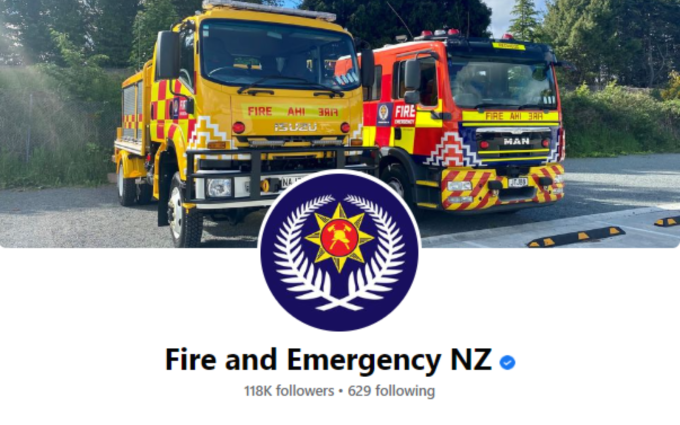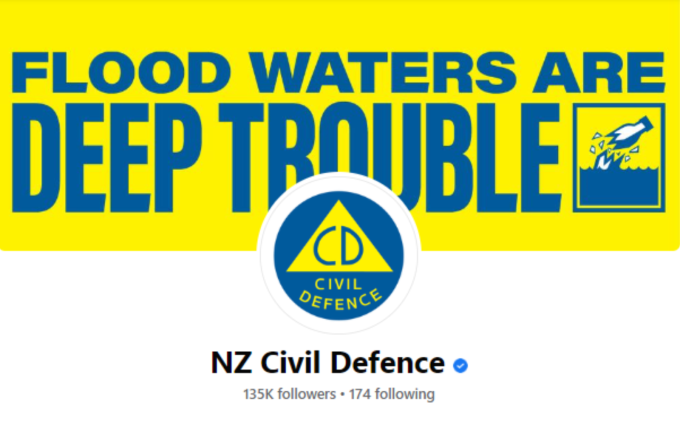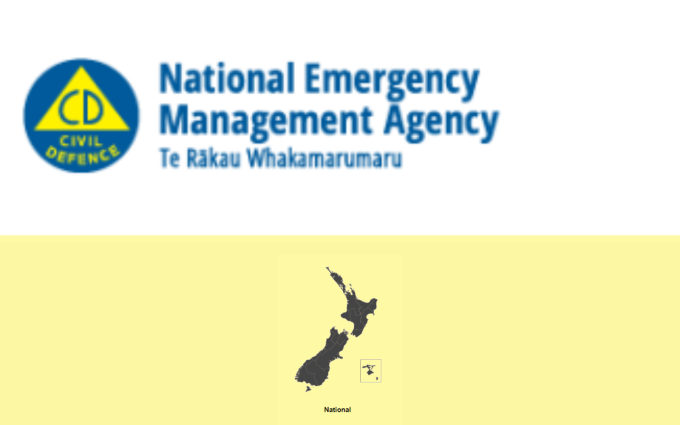Where to find information
For an extreme weather event like a cyclone or flood, regular updates will be shared on our national Facebook page. More information is also available from Civil Defence and local Emergency Management websites.
You can find your local Civil Defence group here(external link).
-
Fire and Emergency on Facebook

Regular updates are shared on our national Facebook page
-
Civil Defence on Facebook

More information is also available on the New Zealand Civil Defence Facebook page.
-
Civil Defence website

More information is also available on the New Zealand Civil Defence website.
High winds
A significant number of incidents at the beginning of Cyclone Gabrielle were related to the winds, with fallen trees affecting property and roofs lifting.
- If it is safe to do so, and when high winds are forecast, prepare by tying down or putting away items like trampolines and outdoor furniture that can become airborne in high winds.
- Call 111 if life or personal safety is at risk. That includes when people are trapped by fallen trees and when people need help to evacuate safely.
Floodwaters
- Do not drive through floodwater. It’s difficult to judge the depth during the daytime and impossible at night.
- Call 111 if life or personal safety is under threat. That includes when people are trapped by floodwater, slips or fallen trees and when people need help to evacuate safely.
Can I light a fire to clear cyclone debris or waste following Cyclone Gabrielle?
The Government has agreed to an Order in Council under the Severe Weather Emergency Recovery Legislation Act 2023 that overrides the Resource Management Act, to classify open-air burning of cyclone and flood waste as a permitted activity for Tairāwhiti and Hawkes Bay, duration, and conditions the order relates to.
These guidelines are in place from July 5 – November 1 2023. Find out more at checkitsalright.nz(external link).
Clearing debris with a burn pile
Severe weather events involving high winds or flooding may result in debris from nearby forests and farmlands accumulating on your property. It is best to follow the advice of your local council in managing disposal of this debris.
If appropriate, fire may be used to clear debris, land or as burn piles. Please follow the guidelines below.
Before you burn, you’ll need to plan:
- how to keep people and property safe
- weather and light-up patterns
- fuel conditions
- when to have your burn
- regulatory requirements
- what people and resources you’ll need to prevent the fire from escaping
- you may have to complete a burn plan to apply for a fire permit.
Hazardous material and location of burn piles
Burn piles should be free from hazardous material.
- Wood waste that has been contaminated from flood waters risks spreading contamination further.
- Tanalised posts and wire that make up debris on vineyards can release toxic chemicals into the wider environment.
Consider the burn piles location and size:
- Have a single pile or series of piles no bigger than 3m in circumference for ease of control.
- Place on a green break at least 30m away from other combustible material on the prevailing downwind side with no debris leading up to other piles.
- Keep away from under or near power lines.
- Keep clear of waterways.
- Consider the burn piles location and size in relation to your area’s current water supply.
- Check if there are current water restrictions in place.
- Place heavier debris in the middle.
- Keep as dry as possible prior to lighting.
We suggest lighting one pile first to check the conditions and observe how the fire is behaving.
During and after a burn pile fire
On the day of the burn:
- Re-check the conditions at checkitsalright.nz(external link)
- Follow the conditions signed off in your burn plan or permit
- Have a safety briefing with those helping you to ensure they are dressed appropriately and clear of the plan and their role, including how you will communicate and where the safety zones areas
- When lighting the fire start slowly and observe how the fire is behaving.
- Be ready to respond to changing weather patterns or fire behaviour.
- Don’t light a fire that’s too big for the resources you have to manage it.
After the burn:
- Keep checking to make sure the fire is completely out.
Find out how to use fire for land management(external link) without putting people, property or the environment at risk.
Candles and oil lamps
We recommend using torches and battery powered devices wherever possible to reduce risk and avoid the use of candles and oil lamps. If you don’t have access to torches, or they run out of battery, be mindful of the risks candles pose to your home.
- Always place them on a heat-resistant surface and firmly in a holder.
- Keep them away from anything that could catch fire like curtains, furniture or clothing.
- Keep them out of the reach of children and pets.
- Put them out before you leave a room and before you go to bed.
Gas Stove tops
- Don’t leave the room when cooking. If you have to, always turn off the stove first. Unattended cooking is the leading cause of house fires in New Zealand.
- Keep curtains, tea towels, oven mitts and any flammable items well away from the cooking area when you're cooking.
Gas cookers
- Don’t leave the room when cooking. If you have to, always turn off the gas cooker first. Unattended cooking is the leading cause of house fires in New Zealand.
- Place it on a flat, stable, heat-resistant surface and make sure you are in an open, well-ventilated room.
- Keep curtains, tea towels, oven mitts and other flammable items well away from the cooking area.
BBQ's, generators and patio heaters
- Make sure you use BBQ's, generators and patio heaters outside, and with adequate ventilation.
Electrical devices
- To prepare for your power coming back on, make sure all light switches, power outlets and cooking appliances are switched off.
- Always check for damage before using, if it is damaged dispose of it safely.
- Charge electronic devices on a hard, flat surface.
Smoke alarms and escape plans
During an extreme weather event, some households may have relatives or friends staying with them.
- Check all your smoke alarms are working. It is important to have one in every bedroom/sleeping area and living room.
- Talk through your escape plan with your household and anyone that may be staying with you. Remember to have two exits and a safe meeting place in case of an emergency.
- Check in on your neighbours if it’s safe to do so.












